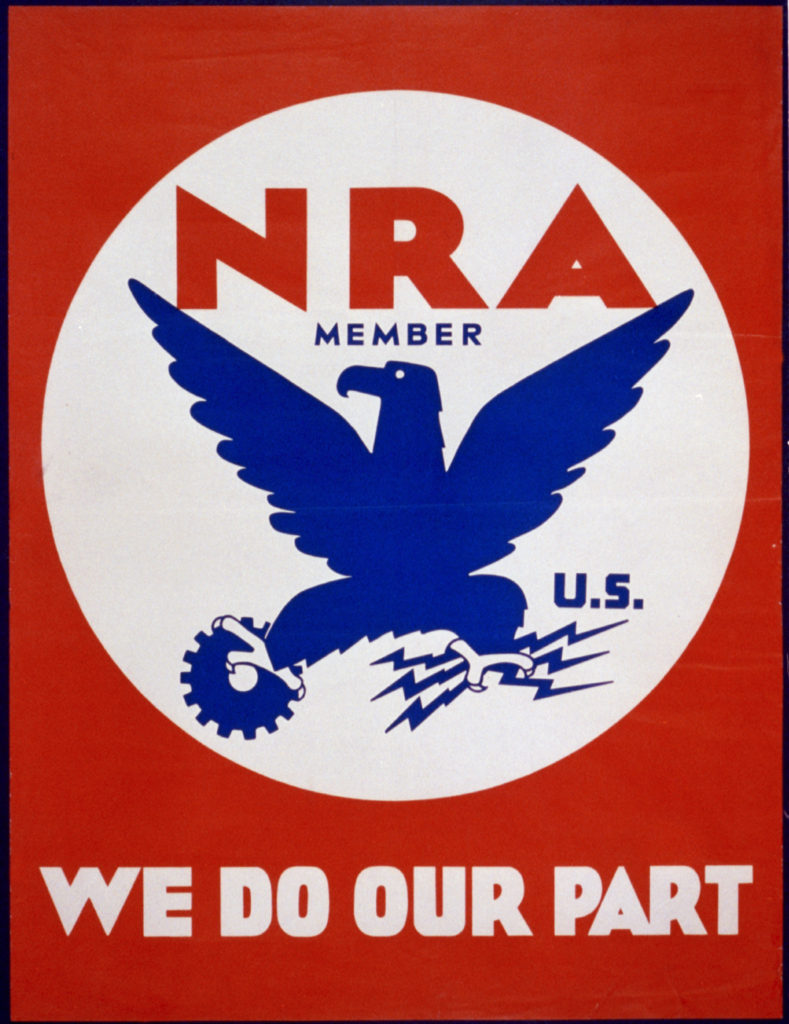“Reforming” Conservatism Should Not Include Embracing the New Deal
And, no, FDR is not a conservative icon
Thanks to Instapundit (here), and to Conrad Black for his response in American Greatness (here), the New York Sun (here), Newsmax (here), and Real Clear Policy (here). Black says that my essay was “a very perceptive summary of the fragmentation of the American conservative intelligentsia in response to the Trump phenomenon.”
Political thought evolves over time, in response to changing conditions, developments in the culture, and demographic shifts, among other factors. Ideology and political rhetoric are not static. It is not surprising, therefore, that the intellectual consensus on the Right in, say, 1980 is not the same as it is today. To the consternation of some pundits (notably Peggy Noonan), and to the relief of others, Donald Trump is not Ronald Reagan. Reagan, whom I greatly admired and fondly remember, was too nice to govern in today’s ruthlessly-partisan Capitol. Politics has become a cage fight, and we need a warrior, not a genial Mister Rogers, in the White House. So, what happened to the “conservative movement” of yore?

In the familiar telling, post-WWII conservatism was based on a three-legged stool, consisting of anti-Communism (and therefore a strong military), commitment to free markets (and therefore pro-business policies), and devotion to traditional morality (what is now referred to as “social conservatism”). Priorities varied, but the potentially fractious components of this coalition were held together by a practical bond forged by the Cold War (Frank Meyer’s “fusionism,” in the familiar telling). The various factions of the Right peacefully coexisted, for the most part. Jerry Falwell’s Moral Majority marched arm-in-arm with establishment think tanks (such as the Heritage Foundation), and the flotilla of center-right publications of the day (e.g., National Review, The American Spectator, Policy Review) featured content from throughout the tri-legged spectrum. Then, toward the end of the 20th century, things changed.
The Soviet Union collapsed, ending the Cold War and dissolving the fusionist bond. The latent fissures among the constituent elements of the Right began to emerge, and widen. “America First” had been the default position for conservatives prior to WWII, as exemplified by Ohio’s Robert Taft, and some on the Right reverted to that position. Neo-conservatives who favored military intervention abroad (and especially nation-building in the Middle East) faced opposition by non-interventionist conservatives who felt America should concentrate on protecting its immediate national interests—self-defense, in other words. This camp, sometimes referred to as “paleo-conservatives” to contrast themselves with the “neos,” were shunned by “the establishment” (a/k/a Conservatism Inc.) and, on occasion, accused of anti-Semitism (and worse).

The rise of global commerce, and the emergence of corporate behemoths no longer focused primarily on U.S. markets, led to pressure for lopsided trade deals and the off-shoring of domestic manufacturing, decimating the American heartland. Americans became concerned at the dramatic demographic transformation due to porous borders and lax enforcement of immigration laws. Populists (and paleos) chafed at the GOP’s fealty to Wall Street, and especially Big Business’s promotion of NAFTA and open borders, leading to Ross Perot’s third-party candidacy in 1992 (ensuring the defeat of incumbent President George H.W. Bush) and 1996, and Pat Buchanan’s presidential runs in 1992, 1996, and 2000.
A new generation of libertarians, uncomfortable with the shotgun marriage to “social conservatives,” bolted and vigorously advocated socially-liberal policies that are abhorrent to the “traditional” leg of the stool, such as abortion on demand, LGBT rights, same-sex marriage, legalizing drugs, so-called criminal justice reform, open borders, and free trade. Sensible (or “paleo”) libertarianism, a form of classical liberalism once represented by publications such as (the now-defunct) The Freeman, essentially disappeared. On many issues, contemporary libertarians are indistinguishable from progressives.

These tumultuous changes, like the shifting of tectonic plates, produced the intellectual equivalent of seismic tremors, geo-thermal activity (in the form of internecine disputes among thought-leaders on the Right), and, ultimately, the volcanic eruption that was the election of President Trump in 2016. Like Pompeii’s destruction by the eruption of Mount Vesuvius in 79 AD, and the far-reaching tsunamis unleashed by the eruption of Krakatoa in 1883, the recent tectonic shifts on the Right destroyed the tri-legged model of conservatism (among other victims, including Bill Kristol’s The Weekly Standard). In 1984, R. Emmett Tyrrell, editor of The American Spectator, wrote a book mocking the chaos on the Left, entitled The Liberal Crack-Up. (The Democratic Party recovered, of course, and went on to hold the White House for 16 years under Presidents Bill Clinton and Barack Obama.) By some measures, the shoe is now on the other foot.
Once-prominent neo-cons and NeverTrumpers have decamped to self-proclaimed exile with ersatz publications such as The Bulwark and The Dispatch; neo-libertarians pursue their own agenda with narrowly-focused publications (e.g., Reason) and organizations (e.g., the Cato Institute); after decades of conservative opposition to judicial activism, some center-right legal scholars now advocate an enlarged role for unelected federal judges, which they term “judicial engagement”; instead of cheerleading for Big Business, populists such as Tucker Carlson skewer the “ruling class”; ostensibly-conservative Beltway think tanks no longer speak with a single voice; and social—and in particular religious–conservatives (e.g., Patrick Deneen) increasingly bemoan the deleterious effects on the culture enabled by capitalism-fueled prosperity and unbridled individual liberty—questioning whether the resulting decadence and debauchery are (or should be) conservative goals. Labels are weaponized in lieu of reasoned debate: alt-right, nationalist, nativist, xenophobia, etc. serve as discussion-ending epithets.
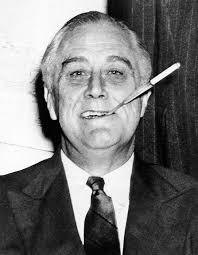
So-called “reform-cons” debate the direction of “the movement” going forward (e.g., here and here). Some of the suggested policy prescriptions deviate markedly from the Reagan era paradigm, but that’s the point. I don’t have the answer to the question “What’s next?”, and do not endeavor to sort through the various proposed alternatives here, but one thing should be clear: The New Deal is not a model for conservative reforms, and its architect, FDR, should not be celebrated as a conservative hero. Yes, he led the nation to victory in WWII, but the bloated superstructure of federal agencies created during his presidency form the basis for the Leviathan administrative state that increasingly imperils constitutional self-government. Lest the reader conclude that I am flogging a straw man, consider Canadian media mogul Conrad Black’s serial defense of FDR in National Review and, more recently, the Trumpian American Greatness.
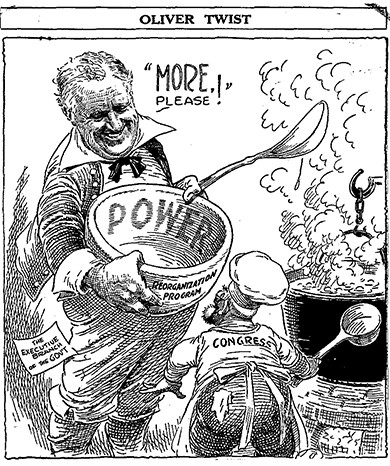
Black’s AG article, entitled “In Defense of FDR,” is full of vitriol toward media host and author Mark Levin and Hillsdale’s Burton Folsom for having the temerity to criticize FDR’s performance and the efficacy of the New Deal. Black, author of a hagiographic biography of FDR, hails the 32nd president as the nation’s savior, who was “the greatest friend American capitalism ever had,” and who “saved the system.” Black, who “obviously adores Roosevelt,” declares in AG that “Instead of demonizing Roosevelt, intelligent conservatives should wrench him away from the Left.” FDR as a conservative icon? This is daft, just as it was when Newt Gingrich sang FDR’s praises (along with boosting futurist Alvin Toffler) in the 1990s. The Old Right had a clearer view. John Flynn’s The Roosevelt Myth (1948) thoroughly debunks such ludicrous paeans, as does Burton Folsom’s New Deal or Raw Deal?: How FDR’s Economic Legacy Has Damaged America (2009).
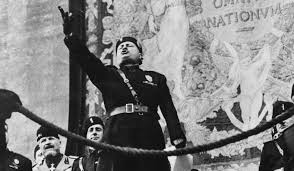
Some reform-cons are even making the case for a national industrial policy (a la China and South Korea), with direct government management of the economy. The term “corporatism” is creeping into the reform-con vocabulary, and with it proposals for “tripartism”—described in a recent issue of American Affairs as “the collaboration of labor, business, and government in the national interest.” Incredibly, resuscitating America’s labor unions—long a goal of progressive Democrats—is being advanced as a conservative policy. Labor unions were not responsible for improving the standard of living across-the-board in America, in either the Gilded Age or the post-WWII era. Then, as now, rising wages are due to technological innovation (enabled by capital accumulation) and increased productivity. Recycling Mussolini’s fascist syndicalism in order to boost wages levels for American workers is a doomed enterprise. A better solution would be to limit the supply of cheap domestic labor (foreign nationals, legal and illegal) through more stringent immigration policies, and to reverse one-sided trade deals.
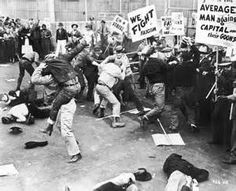
Workers in certain industry segments (such as domestic auto manufacturing) enjoyed above-market wages and benefits due to unionization in the short run, but global competition eventually prompted Detroit automakers to move some of their production to non-union plants in right-to-work states—and ultimately forced General Motors and Chrysler into bankruptcy. Collective bargaining is not a panacea but an archaic New Deal relic. The National Labor Relations Act spawned a dynasty of union corruption, picket line violence, abrogation of employers’ property rights and individual employees’ economic liberties, coerced dues, rampant rent-seeking, and economic distortions typical of cartel behavior—higher consumer prices, misallocation of resources, impediments to productivity and innovation, and so forth.
Michael Lind, whom reform-cons have adopted as a “tripartism” guru, imagines that opposition to unionization is limited to “libertarians who hijacked the Right … to rewrite history.” Nothing could be further from the truth. Opposition to the NLRA and union abuses has been a pillar of conservative thinking since the New Deal. Montgomery Ward chairman Sewell Avery was famously arrested by federal authorities in 1944 for failing to submit to government demands that the company settle a labor dispute. Avery was no wild-eyed radical, and his protest was not part of the anti-union revisionist history invented by the Cato Institute, as Lind risibly suggests. Many devotees of free market economics—across the conservative spectrum—have criticized labor unions. There is a rich body of scholarly literature debunking the fable that unions benefit the working class.
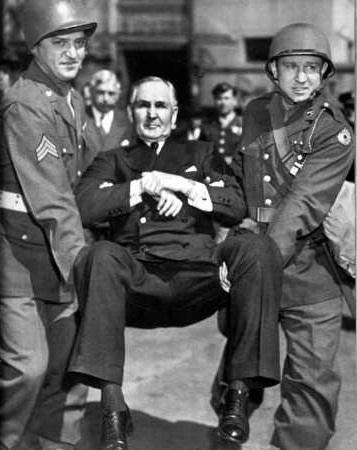
If reform-cons wish to be taken seriously, they must abandon their infatuation with the New Deal and collective bargaining. Reinventing the conservative movement in 2020 will require looking to the future, not fantasizing about the failed policies of the past.
